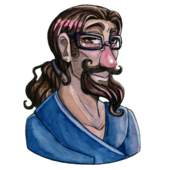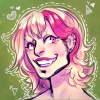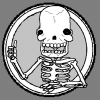Sorry if this isn't the right place for this thread.
Since artistic ability of mine isn't great I've been considering approaching artists willing to produce concept art for my game. My question is what does such an artist need to produce pieces that suit the game designers vision? What information is best used to accomplish this?
My rough thoughts on what I could provide.
Written description/background of the art piece
Noting art sources you wish to emulate or draw style from.
Rough amateur sketches of the desired art piece?
What to approach a concept artist with?
I'd also add what moods and emotions you are trying to convey as well as any historical information about the piece (character bio, area lore, or monster specie details).
Hi,
Certain artists work only in some areas, either by experience or preference, so provide your requirements first. We artists need to know technical things such as object file format, mapping, texture file format, shaders, and so forth - later, so keep it simlple at first. .Don't get too deep into the technical details because the artist will know if there is a fit based on ten lines or less of requirements.
As for artistic style, you will need to see some examples of the artist's previous work. Let the person know which ones got your attention and why if you are considering that one. In some cases, it may be more important for you to know the style and ability of the artist than for such to know details about your goals. Many artists have great flexibility and adaptability. I recommend finding an adaptable artist in the beginning rather than a specialist because of future needs and unexpected realizations. Keep one artist with broad ability on your team at all times and fill specialist needs after that as they arise. By the way, there are some things which specialists tend to do best in general, so there is a role for them, too.
Here is an example:
Stage 1 - Advertisement
" A 2D game developer is looking for a concept artist with experience in 2D animations, sprites, 2.5 levels, and pixel shading. Game will be an RPG cartoon style. Game will be like...[Keep this very simple at this point] "
Stage 2 - Initial Contact
Ask to see the artist's past works.
Stage 3 - Requirements and Offer
Let the artist know more about what you need and end the correspondence or talk with an offer if you seem to be compatible.
Start communication simple and increase it as the working relationship evolves.
Clinton
Certain artists work only in some areas, either by experience or preference, so provide your requirements first. We artists need to know technical things such as object file format, mapping, texture file format, shaders, and so forth - later, so keep it simlple at first. .Don't get too deep into the technical details because the artist will know if there is a fit based on ten lines or less of requirements.
As for artistic style, you will need to see some examples of the artist's previous work. Let the person know which ones got your attention and why if you are considering that one. In some cases, it may be more important for you to know the style and ability of the artist than for such to know details about your goals. Many artists have great flexibility and adaptability. I recommend finding an adaptable artist in the beginning rather than a specialist because of future needs and unexpected realizations. Keep one artist with broad ability on your team at all times and fill specialist needs after that as they arise. By the way, there are some things which specialists tend to do best in general, so there is a role for them, too.
Here is an example:
Stage 1 - Advertisement
" A 2D game developer is looking for a concept artist with experience in 2D animations, sprites, 2.5 levels, and pixel shading. Game will be an RPG cartoon style. Game will be like...[Keep this very simple at this point] "
Stage 2 - Initial Contact
Ask to see the artist's past works.
Stage 3 - Requirements and Offer
Let the artist know more about what you need and end the correspondence or talk with an offer if you seem to be compatible.
Start communication simple and increase it as the working relationship evolves.
Clinton
Personal life and your private thoughts always effect your career. Research is the intellectual backbone of game development and the first order. Version Control is crucial for full management of applications and software. The better the workflow pipeline, then the greater the potential output for a quality game. Completing projects is the last but finest order.
by Clinton, 3Ddreamer
We artists need to know technical things such as object file format, mapping, texture file format, shaders, and so forth - later, so keep it simlple at first.
Would alot of those be relevant for concept art? As in art designs 'on paper' to establish a look before producing the final product in game?
I'd say just do your best to communicate your vision. Some little sketches may help, and perhaps relevant reference material, just don't go too overboard here. You may begin to limit some areas that could have been left for exploration.
But if you've got a vague idea of something, do not under any circumstances just say "something with alien stuff" or similar. Do your best to describe the feeling you want; vast or enclosed, the variety of characters and animals, a little background lore and culture, anything that might help.
Remember that drawing is not just the content of an image, but the composition (thus why you need to explain the feeling you want from it).
Basically, you want to give the artist room to breathe, but you can't be too vague either; I've seen a lot of artists stuck in artistic limbo because all the information they got on a character was "a girl with black hair" or "A cool dude with awesome clothes". You don't want to do that to the artist, it's bad for them, it's bad for you, and in the long term probably bad for the consumer as well.
It's also worth noting that a concept piece is just that; a concept. It's to convey the look and feel of a game to give you and your team something visual to work with, and is not necessarily to hang on your wall (though that tends to be a good side effect of concept art by fantastic artists)!
But if you've got a vague idea of something, do not under any circumstances just say "something with alien stuff" or similar. Do your best to describe the feeling you want; vast or enclosed, the variety of characters and animals, a little background lore and culture, anything that might help.
Remember that drawing is not just the content of an image, but the composition (thus why you need to explain the feeling you want from it).
Basically, you want to give the artist room to breathe, but you can't be too vague either; I've seen a lot of artists stuck in artistic limbo because all the information they got on a character was "a girl with black hair" or "A cool dude with awesome clothes". You don't want to do that to the artist, it's bad for them, it's bad for you, and in the long term probably bad for the consumer as well.
It's also worth noting that a concept piece is just that; a concept. It's to convey the look and feel of a game to give you and your team something visual to work with, and is not necessarily to hang on your wall (though that tends to be a good side effect of concept art by fantastic artists)!
Looks like Bagel beat me to the punch again! 
Only thing(s) I'd like to add are that, in my opinion, working with a concept artist should be like a fun brain-storming session.
You have an idea of what you want to see in your head, but that can morph and change as you see the artist work on your idea. And it's a two way street. The artist should run with ideas and be willing to change course when you chat and develop the idea, usually making something much more than what your started with.
One game that I worked on (before it got shelf-ed for other projects) started as a futuristic free-running game and ended up being a racing game where the player rode around on disfigured, mutant beasts. I hope the game gets back off the ground sooner rather than later because it's so fun to create assets for.
But yeah, as others have said, be flexible but keep your idea in mind if you're really dedicated to it. Don't leave the artist to just run around with no real direction and communicate with them. I personally prefer to have an open line of communication and to do some quick sketches with the client sitting with me or over skype so I can get a real feel for what direction they really like more.
Oh, and one more thing, it's your buck, so be willing to ask them to do something else if you're not too happy with it, but please, for all the artists out there, pay them for the work you commission, even if you don't like it. It took them time, effort, and skill to create and usually they thought that's what you wanted. Most of us have spent plenty of years and thousands of dollars gaining experience, honing our craft, earning our educations, gathering our tools, and developing our portfolios. Just keep in mind that no one should do their jobs for free, even the ones they love.
Sorry for letting my bitterness climb out; it's been doing that alot lately!
Hope I was some help and good luck!
Only thing(s) I'd like to add are that, in my opinion, working with a concept artist should be like a fun brain-storming session.
You have an idea of what you want to see in your head, but that can morph and change as you see the artist work on your idea. And it's a two way street. The artist should run with ideas and be willing to change course when you chat and develop the idea, usually making something much more than what your started with.
One game that I worked on (before it got shelf-ed for other projects) started as a futuristic free-running game and ended up being a racing game where the player rode around on disfigured, mutant beasts. I hope the game gets back off the ground sooner rather than later because it's so fun to create assets for.
But yeah, as others have said, be flexible but keep your idea in mind if you're really dedicated to it. Don't leave the artist to just run around with no real direction and communicate with them. I personally prefer to have an open line of communication and to do some quick sketches with the client sitting with me or over skype so I can get a real feel for what direction they really like more.
Oh, and one more thing, it's your buck, so be willing to ask them to do something else if you're not too happy with it, but please, for all the artists out there, pay them for the work you commission, even if you don't like it. It took them time, effort, and skill to create and usually they thought that's what you wanted. Most of us have spent plenty of years and thousands of dollars gaining experience, honing our craft, earning our educations, gathering our tools, and developing our portfolios. Just keep in mind that no one should do their jobs for free, even the ones they love.
Sorry for letting my bitterness climb out; it's been doing that alot lately!
Hope I was some help and good luck!
Check out my game blog - Dave's Game Blog
Hello,
This is originally a design-method, but maybe a moodboard would also be helpful. Basically, you take a stroll 'round google images, picasa, flickr, dA etc. and put together a A3-sheet (or 2-3 screens worth of content) full of images that convey the feeling you want your game to have. When searching for the images, it's important that you focus on the mood, not the content. It's okay if it happens to be the same setting as your game, but it doesn't have to; don't hesitate to include something with a completely different setting if it manages to invoke the feelings you desire for your game.
If your moodboard is somewhat good, the artist will be able pick up that mood way better than he would be able to from the average description and at the same time, he'll get some first impressions what kinds of shapes, styles and colorpalettes could be used to create that mood.
@All Names Taken: I hope this will be helpful to you.
@Everyone else: Do you think this is a good method for this situation? As I said before, I only know this as a method in the early stages of (mostly product-)design, but I don't see why it shouldn't work in art as well.
bw,
Tobl
This is originally a design-method, but maybe a moodboard would also be helpful. Basically, you take a stroll 'round google images, picasa, flickr, dA etc. and put together a A3-sheet (or 2-3 screens worth of content) full of images that convey the feeling you want your game to have. When searching for the images, it's important that you focus on the mood, not the content. It's okay if it happens to be the same setting as your game, but it doesn't have to; don't hesitate to include something with a completely different setting if it manages to invoke the feelings you desire for your game.
If your moodboard is somewhat good, the artist will be able pick up that mood way better than he would be able to from the average description and at the same time, he'll get some first impressions what kinds of shapes, styles and colorpalettes could be used to create that mood.
@All Names Taken: I hope this will be helpful to you.
@Everyone else: Do you think this is a good method for this situation? As I said before, I only know this as a method in the early stages of (mostly product-)design, but I don't see why it shouldn't work in art as well.
bw,
Tobl
Think my post was helpful? Want to thank me? Nothing easier than that: I sure am are a sucker for reputation, so just give it a little keycode 38 if you like. ^^
This topic is closed to new replies.
Advertisement
Popular Topics
Advertisement







